Running Head: INTERVIEW STRUCTURE AND APPLICANTS’ REACTIONS
The effect of interview structure on applicants’ reactions: A laboratory experiment
Maisarah binti Mohd. Taib (0510632)
International Islamic University Malaysia
Paper submitted as partial fulfilment of the requirement for PSYC 4990 Undergraduate Research Project, Section 1, supervised by Asst. Prof. Dr. Alizi Alias at the Department of Psychology of the International Islamic University Malaysia in Semester 1, 2008/2009.
Introduction
Looking for the right person for a job is not an easy task for the employers. Any organizations would love to hire the right individual to work with them. However, many organizations do not realize that their wish to have a good employee to work with them is very much dependant and rooted on personnel selection process itself. Personnel selection process here refers to the process of selecting potential job applicants to be hired as new employees to work with the organization (Dipboye & Gaugler, 1993).
Personnel selection is a subject with a long history and of great controversies especially on its effectiveness and dignity (de Wolf & van den Bosch, 1998). Therefore, as indicated in most reviews of research of personnel selection (i.e., Borman, 1997; Hough & Oswald, 2000; Landy, Shankster & Kohler, 1994), examining the efficiency of selection tools in terms of their psychometric properties as well as their utility and legal defensibility are essentially important. However, personnel selection involves more than merely predicting in statistical terms the fitness or suitability of an individual for a particular job (Anderson, Born & Cunnigham-Snell, 2001; Posthuma, Morgeson & Campion, 2002), by which it also take into consideration the issue of applicant perspective.
Anderson and Ostroff (1997) have defined applicants’ reactions as applicant decision making, organization’s reputation from applicant perspective and applicants’ legal actions. Alternatively, Moscoso (2000) in his review of selection interview, has defined applicants’ reactions as applicants’ perceived attraction of organisation and acceptance intention, recommendation of the job to other people, and perceived organisational justice. From both definitions offered, analytically Moscoso (2002) definition of applicants’ perceived attraction of the organisation, acceptance intention, and recommendation of the job to other people are similar to Anderson and Ostroff (2002) definition of applicants’ decision making and organisations’ reputation from the applicant perspective. Therefore, conceptually, applicants’ reactions can be defined as applicants’ decision making, perceived organisational attractiveness, perceived procedural justice and applicants’ legal actions.
As oppose to selection validation perspective or organizational perspective, researchers like Rynes (1989, 1991, 1993a, 1993b) and Herriot (1989) had captivatingly entice the world of personnel selection and drew the attention to the perspective of the applicants. Ever since, instead of validating and estimating the reliability of selection tools, researchers have focused their attention on looking at the perceived fairness of selection process from the viewpoint of the applicants.
For instance, Schuler (1993) has noted that information given out by the organization influences the perceptions of applicants. On the other hand, Rynes (1989, 1991) has mentioned that, reasons such as unrealistic applicant expectations, conflicting objectives, administrative complexities and surplus induced complacency could leads to the fall far short of applicant expectations in recruitment. She further suggested that “assessment and selection can be improved by viewing applicant as customers and by better management of recruitment process” (Rynes, 1989, p.38). Conversely, other researchers like Latham and Finnegan (1993) focus on perceptions of a limited area of assessment selection namely employment interviews by which applicant and organizational perspectives were compared and contrasted.
The use of interview in personnel selection process is almost universal to the extent it is perceived to be odd by the applicants if they were not interviewed. For many organizations, interviews are the only or most important tool used in personnel selection process (Borman, 1997; Hough & Oswald, 2000; Landy et al., 1994). Nonetheless, most organizations that rely heavily on interviews as tool for their selection decisions may not realize that some types of interview can be problematic and may result in missing out on hiring the best person for the job.
One type of interview use in personnel selection process is structured interview. Structured interview can be defined as interviews in which the questions are based on thorough job analysis, where every applicant is asked the same questions, and there is a standardized scoring system so that identical answers are given identical scores (Dipboye, 2005; Dipboye and Gaulger, 1993). Contradictorily, unstructured interview is the kind of interview that neither implies question and /or scoring standardization nor it is founded on thorough job analysis. Structured interview since it was introduced has indeed offered a vast improvement over the dark ages of unstructured interview in terms of its psychometric property (Judge, Cable & Higgins, 2000).
Psychometrically speaking, validity of structured interview was found greater than unstructured interview specifically the corrected validities for structured interviews ranged from .35 to .62, while unstructured interview ranged only from .14 to .33 (Campion, Palmer & Campion, 1997). On the other hand, from applicant perspective, most research indeed has been devoted on looking at the impact of these two extreme ends, which is both structured interview and unstructured interview on applicants’ reactions (Judge et al., 2000; Kohn & Dipboye, 1998) with only few exceptions (c.f., Hysong & Dipboye, 1999). Moreover, except for Taylor and Bergman (1987), all studies afterwards had illustrated that applicants react negatively to highly structured interview compared to unstructured interview. This subsequently further begs the question how would applicants react to a moderately structured interview?
Therefore, the present study aims to examine the impact of interview structure on applicant reactions particularly to investigate whether semi-structured or moderately structured interview would yield favourable applicants’ reactions compared to structured and unstructured interviews.
Significance of research
The present research might yield significant contribution for theoretical development, research development and practical applications. For theoretical development as noted by Schuler et al., (1989) and Rynes (1989), research on applicants’ reactions only begin to receive attention in early 1990s. Thus, not much studies conducted on applicants’ reactions were founded on theories. Alias and Zainal (2006) further noted that research on applicants’ reactions could either be based on theory or model from two research streams, which are research on applicants’ reactions and research on employment interview. Nonetheless, both streams are rather in general context of personnel selection.
Most existed models of employment interview more inclined toward organisational perspective rather than applicant perspective by which the dependent variable are either organisational decision like Arvey and Campion’s (1982) interview model or validity and fairness like Eder, Kacmar and Ferris (1989) and except for Rynes (1989), by which the dependent variable is recruitment success, yet it still neglect applicants’ perceived fairness. Conversely, most theories of applicant reactions are either too broad (e.g., Herriot’s social process theory), operationally vague (e.g., Schuler’s social validity theory) or explanatorily limited to only certain factors (e.g., Gilliland’s organisational theory & Rynes’ job signalling theory).
So far, there is no specific theory of applicants’ reactions toward employment interview. Nonetheless, several researchers had begun developing model of applicant reactions toward interview like Rynes, Barber and Varma (2000). Furthermore, Dipboye (2005) has developed a model of recruitment or selection interview that take account of applicants’ reactions as its dependent variable. The usefulness of all these theories and models will be further discussed in the theoretical framework’s section. But, most importantly, as suggested by Rynes et al,. (2000), by studying the influence of interview structure on applicants’ reactions, the present study may contribute to the continuous effort in developing models and theories of applicants’ reactions toward interview.
In terms of research implications, studies conducted on applicants’ reactions toward interview process (structure, content and focus) is still very small in number. Although, in applicants’ reactions’ research, interview structure outnumbered research conducted on interview content, interview focus and interview modality, there are still unanswered questions just like what has been noted by Rynes et al., (2000) it is still difficult to draw a clear conclusion.
Research on applicants’ reactions particularly towards interview structure had yielded mixed results (Posthuma et al, 2002; Rynes et al., 2000). Most probably due to variation in methods used and theories or models founded. The other possible factor would be because most previous studies conducted on applicants’ reactions on interview had investigated between two extreme structures (structured and unstructured). As noted by Kohn and Dipboye (1998), future research should investigate possible factors that lead to negative applicants’ reaction including moderate structured interview.
So far, only one study has investigated the impact of moderate interview structure or semi-structured interview on applicants’ reactions, that is by Hysong and Dipboye (1999). Nonetheless, more research is needed in comparing these three types of structure because each research on applicants’ reactions on interview structure varied methodologically as well theoretically. Therefore, the present research could yield a significant research implication by which it may provide answers to the issues such as why applicants reacted negatively to highly structured interview and why the results were found mixed across all studies of applicants’ reactions on interview structure.
For practical applications, as noted by Kohn and Dipboye (1998) negative applicants’ reactions toward highly structured interview should not be the reason why the organisation should not employ structured interview in personnel selection process. This is because research has shown that highly structured interview is highly valid compared to unstructured interview (Huffcutt & Arthur, 1994; McDaniel et al., 1994). Yet, 70 % of the organisation used unstructured interview in personnel selection (Locke & Cooper, 2000). Nonetheless, research findings should be able to provide assistance to practical problems faced by the organisation.
The practical issue concerned by the organisation would definitely be what if the organisation will miss out hiring potential applicants because the applicants reacted negatively to structured interview. Thus, as the present study aims to examine the effects of structured, semi-structured and unstructured interview on applicants’ reactions it might provide a solution to the problem. If applicants reacted positively to semi-structured interview, it might help the organisation to opt for a valid interview that also yields positive applicants’ reactions. As done by Hysong and Dipboye (1999) semi-structured interview still retained its job-relatedness in its questions but also flexible for the applicants’ part as it allow applicants’ voice in the interview. Consequently, organisation could attain positive applicant reaction without sacrificing the validity of the interview itself. Therefore, the present study may also provide significant practical value.
Models and theories of employment interview and applicant reactions
Research conducted on applicants’ reactions has been founded on two means of theoretical foundations, either based on theory or based on research model (Alias & Zainal, 2006). There are several models of selection interview that have been developed based on review of findings of past research: (a) Arvey and Campion’s (1982) interview model, (b) Eder’s et al., (1989) integrative model of interview, (c) Rynes’(1989) recruitment interview model and (d) Dipboye’s (2005) selection/ recruitment interview model. Conversely, several theories have been developed to explain the issue of applicant reactions: (a) Herriot’s (1989) social process theory, (b) Schuler’s (1993) social validity theory, (c) Rynes’ (1991) job signalling theory and (d) Gilliland’s (1993) organisational justice theory.
All theories and models listed above are based on either models of interview or theories of applicant reactions, not based on applicants’ reactions on job interview. In a recent review on applicant reactions by Anderson et al., (2001), they have presented three additional models that could be used to better explain applicant reactions’ issue in the context of applicant reactions to selection, namely: (a) Arvey and Seckett’s (1993) applicants’ reactions model, (b) Iles and Robertson’s (as cited in Anderson et al., 2001) model and (c) Anderson and Ostroff (1997). Furthermore, another model of applicant reactions to employment interview by Rynes et al., (2000) can also be used to explain the issue of applicant reactions particularly related to interview process. Therefore, all these models and theories will be briefly described and will be further demonstrated on its relevance and usefulness for the derivation of the present study’s research model.
Models of employment or selection interview
In review of models of employment interview and theories of applicants’ reactions by Alias and Zainal (2006), they have discussed four models of employment interview. Firstly, Arvey and Campion’s (1982) interview model presented three factors that could influence interview process and interview outcomes, namely applicant factor (e.g. age, physical appearance, educational background, job interest, perception on interviewer, job and organisation etc.) , situational factor (e.g. interview structure, selection ratio, numbers of interviewer etc.) and interviewer factor (e.g. age, race, sex, physical appearance, experience and training in interviewing, prior information about applicant etc.) . This model has presented a comprehensive model on how interview outcomes can be affected by applicant, situational and interviewer factor particularly from organizational view (Alias, & Zainal, 2006). However, there is no illustration on how these factors combine to form or influence interview outcomes. In addition, the interview outcomes (like applicants’ reactions and applicants’ decision making) were not explained. Thus, the usefulness of this model only limited within organisational framework and not relevance to be used in applicant reaction’s study like the present study.
Secondly, an integrative interview model was developed by Eder et al., (1989). Based on studies conducted on employment interview, this model has integrate all factors known as pre-interview impression effects, information processing and impression formation, pre-planning, process dynamic and applicant strategies into one model. The end product of the interview outcomes are the validity and fairness. As noted by Eder et al., (1989), impression formation is used by the interviewer in evaluating the applicant and the evaluations were influenced by endogenous factors (pre-interview impression effects and process dynamics, and exogenous) and exogenous factors (pre-planning, process dynamic and applicant strategies), in turn may enhance interview reliability, validity, utility and fairness. Although this model managed to synthesize diverse research streams into a single framework its central focus yet to be in organisational context (as the primary interest is the validity and fairness of interview). Furthermore, the complexity of variable relationships is not completely captured, and interviewer’s information processing factor was given more emphasis rather than interview process factor.
Thirdly, Rynes’ (1989) recruitment interview model focuses on the use of interview as selection vs. recruitment device and captivatingly has included applicant perspective as one of the factor affecting recruitment success. In this model (see Rynes, 1989, p. 129), labour market and vacancy attractiveness were hypothesized to influence recruitment success as well as interview activities. Consequently, it would affect the interview objectives via their impact on applicant and interviewer’s characteristics. The extent to which the recruitment is to be more important in the interview will in turn influence applicant and interviewer’s conduct and accordingly will influence applicants’ post-interview impression. Although this model has included applicant perspective for recruitment success, the organisational perspective is still the major element in this model especially in terms of the influence of labour market and vacancy attractiveness in influencing organisational decision to either opt for recruitment or selection as well as in recruitment activities. Furthermore, applicant and interviewer’s characteristics were hypothesized to affect the interview objective and it does not indicate how it could influence the applicant reactions on interview process (Alias, & Zainal, 2006). As the recruitment is the primary outcome concerned by this model, it also unable to explain the influence other factor of interview process (i.e. interview content and structure).
Recently, Dipboye (2005) has developed a model of selection or recruitment interview that depict intertwine between context (organizational environment, organisational culture, human resource function and interview task context) and the core processes (expectations, beliefs, needs, social interactions, information processing and decision making of both applicants and interviewers) that took place at the level of the interview (see Figure 1). He had demonstrated how core processes between applicant and interviewer influence their social interaction and their decision making which in turn will affect the validity, reliability, fairness of decisions and candidate attraction to organisation, job and interviewer. All these core processes were hypothesized to be embedded in the contexts of the interview as described earlier. Interview structure as one of the contexts of interview was hypothesized to influence validity, reliability, accuracy, recruiting outcomes, fairness and applicant’s decisions. With regard to contextual influences, this model also has presented the influence of applicant perspective referring to applicant’s needs, expectations, information processing, judgement and decision making on interview which has been neglected by previous models of interview.
Additionally, compared to other models of interview, Dipboye (2005) has included other interview process such as interview structure, content, focus and modality in his model which are absent in previous models. Therefore, in comparison with Arvey and Campion’s (1982) , Eder’s et al., (1989) and Rynes’ (1989) interview model, Dipboye’s interview model would be a suitable model in guiding present research on the influence of interview process on recruiting outcome.
Theories of applicant reactions
Smither, Reilly, Millsap, Pearlman, and Soffey (1993) have listed several theories founded on either deductive or inductive method that have been used in applicant reaction’s research. Theories derived from deductive method are Herriot’s (1989) social process theory and Schuler’s (1993) social validity theory. Rynes’ (1991) job signalling theory and Gilliand’s (1993) organizational justice theory on the other hand, were developed based on inductive method. From all these theories, researchers have argued on their usefulness to explain the issue of applicant reactions and it is agreed that Gilliland’s organisational justice theory is the most promising and useful framework to conceptualize applicant reactions’ to selection procedures (Anderson, et al., 2001; Borman, 1997; Chan & Schmitt, 2004; Kohn & Dipboye, 1998; Ployhart & Ryan, 1998). Therefore, only Gilliland’s organisational justice theory will be discussed in detail.
It is proposed in Gilliland’s (1993) organisational justice theory that applicants’ reactions are influence by their perceived fairness of selection decisions and their perceived fairness of the hiring process, which known as distributive and procedural justice respectively. Distributive justice is determined by three distributive rules; equity, equality and needs. Equity according to Gilliland refers to the extent to which the decision is deserved based on past experience, success and qualifications by which perception of equity arise when the hiring decision is consistent with applicants’ hiring expectation and inequity results from underpayment (when negative outcome is unexpected) or in contrast overpayment (when positive outcome is unexpected). Equality and needs as postulated by Gilliland are equal chance of receiving an outcome and preferential treatments should be given to certain sub-groups (i.e., disable applicants) for the needs rule.
For procedural justice, there are 12 selection procedural justice rules (Gilliland, 1993). These rules are relate to the formal characteristics of the process (e.g., job relatedness), rules relating to the information offered during selection process (e.g., performance feedback and selection informativeness, honesty in treatment), interpersonal treatment (e.g., recruiter effectiveness, two-way communication and propriety of questions) as well additional rule like ease of faking (see Table 1 below).
Table 1
Procedural justice rules
Rule Definition
Formal characteristics
- Job relatedness
- Opportunity to perform
- Consistency of administration
The measurement of constructs relevant to the job
The opportunity to display, knowledge, skills and
abilities
The standardization of administrative procedures
across people and technique
Information offered
- Performance feedback
- Selection process information
- Honesty in treatment
The provision of timely informative feedback
regarding selection performance and the outcome
The adequacy of information provided to applicants
regarding the selection process
The organisation’s integrity during section
Interpersonal treatment
- Recruiter effectiveness
- Two-way communication
- Propriety of questions
The interpersonal effectiveness and interest of the
recruiter
The adequacy of information provided to applicants
regarding the selection process
The appropriateness of the questions asked
Additional
- Ease of faking
The extent to which applicants believe information can be distorted in a socially desirable way
Source. Gilliland (1993)
All these rules are theorized to influence perceptions of overall fairness of a given selection process and other outcomes (Gilliland, 1993). Potential outcomes as noted by Gilliland include reactions during hiring such as organisational attractiveness, job acceptance, and test-taking motivation (e.g., reactions after hiring such as legal actions, on –the-job performance and attitudes, and reapplication intentions), and self perceptions (e.g., self-esteem and test-taking self-efficacy).
As noted earlier, most researchers agreed that Gilliland’s organisational justice theory is the most promising theory that can be based on in explaining applicants’ reactions’ issue. Nevertheless, Rynes et al., (2000) argued that this theory may not be able to explain the issue of applicants’ intention acceptance. But would be more suitable to explain applicants’ reactions from legal defensibility aspect (Rynes et al.,). Furthermore, Chan, Schmitt, Sacco and DeShon (1998) further noted that rather than measuring applicants’ reaction on each of the rules in the theory, global reaction to the test would yield a better prediction on applicants’ reactions. Thus, as this theory is the most promising one in explaining the issue of applicant’s reactions, and global measurement might help a better prediction of applicants’ reaction this theory is a useful theory to be based on for the measurement of applicants’ reactions.
Models of applicant reactions to selection
In recent review of applicant perspectives on recruitment and selection by Anderson et al., (2001), they had presented 3 models of applicants’ reactions toward selection. Firstly, Arvey and Sackett (1993) developed a model that proposed four factors that can influence the perceived fairness of selection process. The four factors are content of selection (e,g., job relatedness, thoroughness of knowledge, skills, ability coverage, invasiveness of questions, and ease of faking answers), an understanding of the system development process, the administration of the selection procedures (e.g., confidentiality, consistency, opportunity for reconsiderations, and prior information) and organizational context (e.g., selection ratio). Although all these factors were found to influence applicant reactions, Gilliland (as cited in Anderson et al., 2001) argued that the model did not illustrate how all these four determinates may form interaction effects on applicant reactions. Nonetheless, with regard to interview process on applicant reactions, this model has presented job relatedness that is noted by Rynes (1993), Dipboye and Gaugler (1993) and Dipboye (2005) as part of dimension of interview structure with regard to its influence on applicant reactions.
Secondly, Iles and Robertson (as cited in Anderson, et al., 2001) suggested that various features of the decision (e.g. intrusiveness, face validity, job relevance, feedback) influence applicants’ cognitive reaction towards to the process and in turn influence various outcomes (e.g., organisational commitment, self-esteem, job and career withdrawal). These outcomes then were moderated by the career stage and individual’s characteristics. Interestingly, Iles and Robertson treated applicant reactions as mediator variable between selection decision and selection outcomes which has been argued to be questionable (Anderson et al., 2001). While the model is useful in highlighting the impact of assessment process on outcome decision, the assessment process that influence applicant reactions only limited on the features of selection method (e.g. intrusiveness, face validity, job relevance, feedback) and no information how the processes took place in the use of any particular selection method used may influence applicant reaction mentioned.
Thirdly, Anderson and Ostroff (1997) proposed a model of socialization impact that put forward five domain framework covering the first, information provision (all selection methods convey information to the applicant, either intentionally or unintentionally. Second, preference impact (the information is one of the factor that influence applicant preferences’ for particular methods). Third, expectation impact (influenced by the first and second domains, it generate and alter applicant expectations of the job role, organization and employer). Fourth, attitudinal impact (selections methods will affect applicant attitudes and beliefs) and the fifth, behavioural impact. As behavioural impact was place as the subsequent impact, Anderson et al., (2001) question its influence and leads to whether the organization could design-in socialisation impact to their selection method in order to improve their predictive validity. Further, this model emphasized how socialization affects applicant reactions rather than the process of the selection itself. Nevertheless, this is another alternative model that has proposed how selection methods may influence applicant reactions that take into account applicant perspective in personnel selection.
In recent review of employment research Rynes, Barber and Varma (2000) has noted two important factors influencing applicant reactions; interviewer’ factors and interview process factors. For interviewer’s factor, interviewer’s traits (e.g., personality characteristics), behaviours (e.g., supportive behaviour and informativeness), and demographic variables (e.g. gender, race, age and level in organizational hierarchy) would influence the applicant reactions. On interview process, interview focus (the degree to which the interview emphasizes on recruitment or selection), interview content (e.g., experience-based questions like PBDI or future based questions like SI) interview structure (e.g., structured interview and unstructured interview) are elements that may influence applicants’ reactions on employment interview (see Figure 2). As employment interviews can be differentiated on a number of dimensions, this model has distinguished interviewer variable and interview process variable. Additionally, although not so many researchers have been conducted on the area of interview process, this model has included all three factors of interview process (content, structure and focus) rather than solely focuses on interviewer variable. Thus, it is a useful model to be based on in conducting research on the influence of interview process on applicant reactions.
Even though quite a large numbers of model were developed based on research on employment interview and applicants’ reactions, not all models are suitable to be based on in studying the influence of interview process on applicant reactions. Some model of employment interview research only focus on the psychometric properties of job interview (i.e., validity, reliability and fairness) like integrative interview model by Eder et al., (1989) or only focus on one interview process (i.e. interview focus) like Rynes’s (1989) recruitment interview model. On the other hand, in applicants’ reactions’ research model, most models focuses on the information processing and socialization influence (i.e., Anderson & Ostroff, 1997; Schuler et al., 1993) rather than the selection method’s influence.
However, in the context of employment interview, Dipboye (2005) has provided a model that includes the role of interview structure on applicants’ reactions. Conversely, in the context of applicants’ reactions model, Rynes, Barber and Varma (2000) has provided a model that take account of interview process’ influence (e.g., interview structure, focus and content) on applicant reactions. Therefore, these two models have been used to develop this present study’s research model (see Figure 3) that intends to investigate the effect of interview structure on applicant reactions.
As can be seen in Figure 3, the research model of this present study is to investigate the influence of interview structure on applicants’ reactions. This model has been derived from two different research models namely Dipboye’s (2005) selection or recruitment interview model and Rynes’ et al., (2000) applicants’ reactions toward employment interview model.
As discussed earlier, not all employment interview models include interview models have included applicants’ reactions as the outcome of interview and interview process as the antecedents except Dipboye (2005). On the other hand, not all theories or models of applicants’ reactions have included interview process like interview structure in their model or theory. Moreover, Rynes’ et al., (2000) model appears to be the only model that particularly illustrating both employment interview and applicants’ reactions in their model. Furthermore, this model had presented not only interviewer variable but also interview process variable like interview structure in their model. Therefore, selection or recruitment interview model by Dipboye (2005) and model of applicants’ reactions toward employment interview by Rynes et al., (2000) has been used to derive the research model of the present study.
Literature Review
In general, most studies conducted in personnel selection process has devoted their attention towards organisational perspective as oppose to applicant perspective. Nonetheless, the attention shifted in early 1990s that open the door to the exploration of applicant perspective in personnel selection process. Although still new, research on applicant perspective has been investigated on various selection methods including employment interview.
Compared to other selection methods like cognitive ability test, personality test, referrals, work samples and other selection tools, employment interview had received an immense popularity as tool of selection (Shackelton & Newell, 1994) by which it is perceived to be a common yet popular method of selection by both organisation and the applicants. Furthermore, research on applicants’ reactions toward employment interview had gone beyond interviewer’s variables by which interview process’ variables (e.g. structure, content, focus, and modality) are also been examined (Rynes et al., 2000).
Therefore, the present study’s literature review had been constructed in a way that it looks at applicant vs. organisational perspective in personnel selection first, followed with methods used in personnel selection particularly employment interview. Subsequently, it has reviewed literatures related to applicants’ reactions towards interviewer and interview process and it had been further narrowed on applicants’ reactions towards interview structure. Additionally, studies conducted on elements of structure and types of applicants’ reactions are also been reviewed.
Applicant perspective vs. organisational perspective in personnel selection process
In personnel selection process, applicants and organisation are actually in a two-way process and actively respond to each other in terms of impression formation as well as decision making (Anderson and Cunnigham-Snell, 2000; Rynes, 1993b). Nonetheless, most research on personnel selection has focused more on organisational perspective compared to applicant perspective. Studies of personnel selection from organisational perspective have focused more on the issues such as predictive validity, utility and legal defensibility.
However, applicant perspective was found to affect all the issues concerned in research from organisational perspective. Studies on applicants’ reactions toward selection procedure by Smither et al., (1993) revealed that negative applicant reactions could affect the predictive validity of selection tool. Moreover, study by Murphy (1986) showed that rejected offers also affect the utility of selection methods. As predictive validity concerned with the ability of selection tool in predicting employee future performance (Schmidt & Hunter, 1989), and utility in contrast concerned with the productivity of the new hires produce more value than the costs of recruiting, selecting, and training them (Murphy et al.,), if excellent applicant react negatively, the organisation might missing out in hiring the best employee. Thus, negative applicant reactions could affect both predictive validity as well as utility of selection methods.
In terms of legal defensibility, the organisation also might be at risk of litigation if applicant reacts negatively to selection methods employed in selection process. Williamson, Campion, Malos, Roehling and Campion (1997) found that interview structure linked with litigation outcomes resulted from negative applicants’ reactions in reported employment discrimination cases. Therefore, although selection methods were found psychometrically valid, cost-effective, and legally defendable but negative applicants’ reactions might jeopardize their validity, utility and legal defensibility. This shows that applicant perspective is very much important.
Employment Interview vs. other personnel selection methods
From organisational perspective, interviews were found to be the most frequently used procedures in personnel selection across Europe (Shackleton & Newell, 1997) and other countries (Salgado, Viveswaran, & Ones, 2001). Furthermore, meta-analyses by Hunter and Hunter (1994) and Mc. Daniel Whetzel, Schidmt and Muarer (1994) found that interviews, especially structured interview are more valid and reliable. Thus, from organisational perspective it is quiet conclusive that interview was found to be the most popular, most utilized and highly valid tool compared to other selection methods.
From applicants perspective on the other hand, several studies has showed that applicants react positively to interview compared to other selection methods and review by Anderson et al,. (2001) showed mixed results. For example, Smither et al., (1993), found that applicants reacted positively to structured and unstructured interview, cognitive ability test and work samples. Contradictorily they found applicants reacted negatively to biodata and personality test. Additionally, in a study of applicants’ reactions on personnel selection techniques in Spain and Portugal, Moscoso and Salgado (2004), found that applicants perceived interviews, resumes and work sample tests as more favourable than contacts, integrity tests and graphology.
Nevertheless, in a study on applicants’ reactions to selection techniques in Singapore and United States by Philips and Gully (2002) found that applicants reacted negatively toward interviews compared to work samples and biographical information blank. Thus, from applicant perspective, mixed results were found which also in accordance with review conducted by Anderson et al., (2001). Therefore, although interview was found to be highly valid and reliable from organisational perspective, but mixed results were found from applicant perspective and. Hence, more research should be devoted on applicants’ reactions on interview.
Interviewer vs. interview process (structure, content, focus and modality)
Studies conducted on applicants’ reactions on interview not just yielded inconsistent results but also have been studied either on interviewers and interview process. Most early research has been conducted on interviewer variable that is in terms of interviewer’s traits, behaviour, and demographic characteristics (Anderson et al., 20001; Rynes et al., 2000).
For interviewers’ traits and behaviours, studies on whether the interviewer is informative and supportive had found a consistent result of yielding positive applicant reactions (Maurer, Howe & Lee, 1992; Taylor & Bergmann, 1987, Turban & Dougherty, 1992; Kohn & Dipboye, 1998) which correspond to review conducted by Rynes et al., (2000) and Anderson et al., (2001). But results of studies conducted on applicants’ reactions on interviewer demographic characteristics are rather weak and inconsistent (Rynes et al.,).
In terms of interview process, the results found were inconsistent and this is because besides the characteristics of interviewers, interviews can be distinguished on a number of dimensions like structure, content and focus as well as modality. Nonetheless, there is still fairly little research on applicant reactions’ to interview process (Posthuma et al., 2002; Rynes et al., 2000,) whereas research on applicants’ reaction to interviewer are quiet conclusive. Hence, research should give more attention toward the influence of interview process on applicants’ reactions compared to interviewers’ characteristics.
Interview processes: Interview structure vs. Interview content, focus and modality
As noted earlier, in the context of interview process the findings are inconsistent. For interview focus, Turban and Dougherty (1992) and Barber, Hollenbeck, Tower Philips (1994) found applicants reacted negatively to recruitment focused interview but Taylor and Bergmann (1987) and Stevens (1998) found no significant correlation between applicants’ reactions and interview focus. Similarly, mixed findings were found for interview content. Latham and Finnegan (1993) showed that applicants reacted positively to PBDI than Si interview but Conway and Peneno (1999) found an opposite finding. So as interview modality although modality is still a new subject of interview process the results found also inconsistent. Chapman and Rowe (2002) found no significant effect between face-to face interview and videoconference interview. But Chapman, Uggerslev and Webster (2003) found applicant rated face to face interview more favourable than videoconferencing.
With mixed results in interview process’ research, the most frequently studied interview process is interview structure either in applicants’ reactions research (Posthuma et al, 2002) or validity research (Campion et al., 1997; McDaniel et al., 1994). Yet, the results found the applicants reacted negatively towards highly structured interview. However, when applicants’ reactions were measured as separate components the results is mixed (Chan et al., 1998). As for semi-structured interview only one study has been conducted that is by Hysong and Dipboye (1999), thus begs for more research on comparing this moderate structure with those highly structured and unstructured rather than focusing on two extreme of interview structure. To date only Taylor and Bergmann (1987) showed structured interview increase applicant attraction. Clearly here, in interview structure itself, there are so many issues unanswered. Thus, examining the effects of interview structure on applicants’ structure is very much important.
Applicant reactions’ towards interview structure
There are quite large number of studies has been conducted on the effects of interview structure on applicant reactions. Nonetheless, each study differed in their operationalisation of interview structure, and mostly applicants’ reactions were measured as separate components rather than as overall perceptions or as global measure. Furthermore, previous research also has been studied using different designs (correlational and experimental), and some has been conducted at natural setting (field experiment or field survey) and some at laboratory setting.
Therefore, this present study will review research conducted by Taylor and Bergman (1987), Bies and Shappiro (1988), Turban and Dougherty (1992), Latham and Finnegan (1993), Kohn and Dipboye (1998), Hysong and Dipboye (1999), Chapman and Rowe (2002) and Chapman and Zweig (2005) by dividing them into field studies and laboratory studies. For field studies, it will be discussed in two subsections, field survey and field experiment. All these studies will be evaluated in terms of design used, participants selected, procedure applied, and measures utilised as well interpretation derived. Subsequently, all these studies will be analysed and accordingly how previous studies contribute to this present study will be discussed.
Field study: field surveys
There are three studies have been conducted via field surveys that are by Taylor and Bergmann (1987) Turban and Dougherty (1992), and Chapman and Zweig (2005). Firstly, Taylor and Bergmann (1987) have conducted a correlational study on applicant reactions’ at different stages of the recruitment process. The study was conducted through college recruitment conducted by a company and the applicants were among undergraduate students. Seventy three interviewers and 1,286 applicants with average age of 23 years, 70% male, 80% single, 42% majoring in business and 41% majoring in engineering have participated in this study. The recruitment process consisted of 5 stages: (a) campus interview, (b) post-campus interview, (c) visit to workplace, (d) job offer, and (e) decision making to either accept or reject job offer. Surveys were distributed to applicants after every stage and only 3% of the initial applicants (n=38) remain at the final stage to answer the applicant reactions’ questionnaire which remarks 96% of participants’ reduction. Focusing on applicants’ reactions toward structured interview, the interview structure was measured via questionnaires rated by interviewers on their perception on the structure of the interview when they were interviewing.
Conversely, the measured dependent variables were organizational attractiveness, perceived probability of receiving job offer, intention acceptance and intended period to work with the organization. Results showed that highly structured interview positively correlated with applicant reactions of acceptance intention (R2 = 0.20, p < .01), but no effect found on perceived organizational attraction (R2 = .00, p > .05). Since the interview structure was operationalised based on interviewers’ perception, the construct validity of this study is very much questionable, since there is no manipulation of structure and also because of subjective judgment of the interviewers. Applicant on the other hand, might perceive the interview structure differently. Another drawback of this study is the 96% of participants’ reduction which from the first stage till the final stage which consequently may affect the statistical power. Nevertheless, this study might be the first study conducted on examining the interview structure on applicant reactions (Rynes et al., 2000), and this study has demonstrated that highly structured interview positively correlated with applicants’ acceptance intention that may provide a practical basis for organization to utilize structured interview in personnel selection process.
Secondly, Turban and Dougherty (1992) had examined applicant reactions in the context of campus recruiting for a variety of organizational positions. In this correlational study they investigated the influences of recruiter behaviours and characteristics and interview focus and structure on applicants’ attraction to firms. Hundred and forty five recruiters conducted 1,600 interviews, but only 74 (65%) of recruiters completed 694 surveys, representing 43% of the interview. On the other hand, 272 applicants completed 644 surveys after campus interview, representing 40% of the interviews. Only data from interview were analyzed that representing 293 interviews collected from 182 applicants and 70 recruiters from 50 firms. The applicants were either from finance (24%), marketing (23%), or management (18%) major who completing their bachelor degree with average age 22 years and predominantly white (96%) with even numbers of men (50%) and women (50%). Conversely, the recruiters were predominantly white (99%) and men (73%).
Focusing on the influence of interview structure on applicants’ reactions, they hypothesized that highly structured interview will lead the applicants to perceive high valence and expectancy perceptions. The interview structure was operationalised based on the recruiters’ perception on the interview structure measured via questionnaire. The recruiters rated the extent to which a recruiter followed a structured format, used a rating scale for candidate responses, and asked a candidate the same questions as other candidate. Applicants’ reactions were measured as intention to accept job offer, and job attractiveness based on expectancy and valence perceptions. Via hierarchial analysis, the results were found mixed. Highly structured interview yielded positive effects on perceived expectation on accepting job offer (R2 = .15, p < .05) but no effects found on applicants’ perceived job and organizational attraction. (R2 = -.03, p > .05). Furthermore, similar to Taylor and Bergmann (1987), the use of recruiters’ perception in operationalising interview structure may confound its construct validity because applicants’ may perceive interview structure differently.
Lastly, Chapman and Zweig (2005) had examined the antecedents and consequences of structured selection interview on interviewers’ and applicants’ reactions via field survey. Focusing on the influence of interview structure on applicants’ reactions it was anticipated that applicants will react negatively to higher levels of interview structure. Specifically, applicants will experience more negative perceptions of procedural justice, perceive greater difficulty with the interview and express lower intentions to accept job offer. The final sample of 812 applicants with average age 20.57 years old, SD= 1.88 and 428 interviewers participated in this study from 338 organisations representing a wide variety of industries. The interviewers rated the degree of structure based on Campion’s 15 elements of interview structure and further conducted a factorial analysis on these 15 elements. Via confirmatory factorial analysis, there are four elements of interview structure found: (a) Questioning consistency, (b) Evaluation standardisation, (c) Question Sophistication, and (d) Rapport Building and these four elements were treated as their criterion variables.
Meanwhile, the applicants rated applicant reaction’s questionnaire that measure procedural justice, perceived difficulty and post-interview intentions and they rated as well Campion’s elements of interview structure. Via regression analysis, mixed results were found. There was no evidence of direct relationship between a linear combination of interview structure elements and applicants’ perceived procedural justice (R=.15, p>.05) and acceptance intentions (R=.19, p>.05). Whereas, highly structured interview were perceived to be more difficult by applicants (R=.25, p<.05). These mixed result may resulted due to measurement of applicant reactions as separate domains which in this case procedural justice, perceived difficulty and acceptance intentions. Additionally, this study was conducted via field survey that precludes any causal relationship. Furthermore, interviewers’ rating on interview structure might confound the objectivity of interview structure’s operationalisation since it is view from the standpoint of interviewers.
Field study: Field experiment
There are two studies that have been conducted via field experiment; that are by Chapman and Rowe (2002) and Latham and Finnegan (1993). Firstly, Latham and Finnegan (1993) had conducted a study comparing the effects of different structured interview contents (PBDI and SI) and unstructured interview on applicant reactions. The study was conducted in the US with 31 senior students who will be interviewed for jobs upon graduation, and 24 people who had experienced been interviewed (defined as employee hires) acted as applicants. A copy of applicant reactions questionnaire and interview descriptions were mailed to the employee hires group and student applicant groups completed the questionnaire anonymously in the classroom. Counterbalancing technique was used to avoid order effect. Researchers had conceptually defined applicant reactions as practicality, and it is operationally defined in 15-items applicant questionnaire contained with 4 domains: (a) on the extent to which the interview gives the applicants an opportunity to present their qualifications for the job in the best possible light, (b) on the extent to which applicants will be hired or rejected fairly (c) on the basis of their qualifications for the job, (d) and the extent to which the interview will enable the applicants to learn enough about the job to in order for the applicants to decide if they want to accept the job.
The results showed a highly significant difference in applicant reactions toward all three types of interview from student groups (F = 10.2, p < .01). Further analyses showed that applicants reacted positively to PBDI interview compared to SI interview (t = 3.16, p < .01) and no significant difference were found between unstructured interview and PBDI interview. On the other hand, no significant difference found in applicant reactions on all three types of interview from the employee hires groups (F = 2.21, p > .05). Thus, the researchers interpreted that student preferred unstructured interview because it allows them to be relaxed, feel free to speak and presenting their best abilities. Furthermore, from practical standpoint, since no significant difference was found in employee hires group, organisation can comfortably use highly structured interview on experienced applicants in job interview. But the researchers notified that since employee hires are those who were hired, the result might be different if the applicants are those who were rejected. Additionally, the use of interview descriptions might limit the generalizibility of this study.
Secondly, Chapman and Rowe (2002) had conducted a field experiment on the influence of videoconference technology and interview structure on the recruiting function of the employment interview. Focusing on the effects of interview structure on applicant reactions, they hypothesized that applicants’ self-ratings will be higher in less structured interviews than highly structured interviews. Ninety-two undergraduate students volunteered to participate in the study with 51 male (54%) and 41 female (44.6%) and average age of 21.1 years (SD=1.65). Prior to interview, applicants were asked to complete a questionnaire consisting of six items designed to measure their pre-interview impression of the company on a 7-point likert scale questionnaire. The items were (a) overall impression of the company, (b) your knowledge of the company, (c) impression of future work environment, (d) impression of opportunities for advancement or future employment, (e) opportunity to learn and (f) attractiveness of the employment position.
Following the interview, applicants were asked to respond to the same items evaluating the attractiveness to the employer and the position. This post interview impression was scored as total sum of the scores. Applicants also evaluated the friendliness of the interviewer, their satisfaction with interviewer performance and their own personal performance. Similar to Taylor and Bergman (1987) and Turban and Dougherty (1992), interview structure was operationalised based on interviewers’ perception. Results showed that the predicted influence of interview was not significant for all dependent variables with post interview impression (F = 1.98, p > .05), interviewer performance (F = 0.09, p > .05), interviewer friendliness (F = 0.00, p > .05), and self-rating (F = 0.06, p > .05). The downside of this study is none but the use of interviewers’ perception in operationalising interview structure which has been argued earlier would be subjectively relevant to the interviewer rather than the applicants. Moreover, the use of field experiment yields great difficulty of controlling the extraneous variables which in this case might confound the result of this study.
Laboratory experiments
There are 3 studies have been conducted via laboratory experiments that have been carried out by Bies and Shappiro (1988), Kohn and Dipboye (1998), and Hysong and Dipboye (1999). Firstly, Bies and Shappiro (1988) have conducted an experimental study on the effect of interview structure applicant reactions from the perspective of voice that is the extent to which the applicants were given opportunity to speak in the interview. Fifty one male and 45 postgraduate business students were selected as participants. They were asked to read a transcript of a scenario of a business graduate’s applicant who made a report on personnel selection process conducted by an oil company. Participants were informed that the applicant received a rejection letter after attending an interview. Participants were randomly assigned into 4 experimental conditions (4 interview transcript) with 24 participants for each condition. The first two conditions are voice-procedure condition and mute-procedure condition whereas the other two conditions received rejection letter transcript with justification or without justification.
The measured dependent variable is participant’s perception as the third person on the procedural justice of the selection process. As anticipated, participants perceived higher procedural justice in voice-procedure condition compared to mute-procedure condition. However, the generalizibility of this finding is limited because of the use of transcript. Furthermore, since the applicant reactions were measured as the third person, the internal validity of this study also threatened.
Secondly, Kohn and Dipboye (1998) have conducted two laboratory experiments on the study on the effects of interview structure on recruiting outcomes. Participants consisted of 437 undergraduates from four different universities in the US with 203 men, 223 (11 students refused to indicate their gender). In terms of race, participants came from different ethnic background such as Caucasian (285), Hispanic (49), African American (38), Asian (49) and 8 indicated “other” while an additional 13 participants declined to indicate their race. Participants ranged in age from 18 to 52 years old with average age of 22.6 years (SD=6.3). Participants were told to imagine that they had just received their college degree and were considering employment opportunities. Subsequently they were told to read the description of interviews, and afterward they were to answer applicant reactions questionnaire as if they were applicants. Focusing in the effects of interview structure on applicant reactions, the researchers hypothesized that individuals in the role of applicants will respond more favourably to unstructured interview in their evaluations and perceptions of the organisation, interview and interviewer.
Via MANOVA, the results revealed a significant main effect of structure (F = 28.15, p < .01). The participants viewed organization that used unstructured interview as more attractive (F = 80.62, p < .001), less authoritative (F = 186.29, p < .01), more social (F = 33.15, p < .01), and more achievement-oriented (F = 17.36, p < .01), compared to structured interview. In the meantime, unstructured interview were perceived as more fair (F = 39.60, p < .01), its interviewers are friendly (F = 1,340.95, p < .01), and its interviewers were seen as more accurate (F = 36.80, p < .01) in making decision compared to structured interview. Participants also perceived that their qualification to fill in the job vacant is higher in unstructured interview than structured interview (F = 24.06, p < .01). Consistent with anticipated hypothesis, 75% participants who went through unstructured interview answered “yes” if they were to be offered a job compared to 45% student who went through structured interview and the differences found was significant with F = 31.17, p < .0001. The use of interview description might reduce the external validity of this study. Nonetheless, Kohn and Dipboye (1998) have noted a useful suggestion that is to investigate the effect of semi-structured interview rather than comparing between two extreme ends of interview structure.
Finally, Hysong and Dipboye (1999) had conducted a between-subject experimental study on the recruiting outcomes of interview structure and post-interview opportunity. Focusing on the effect of interview structure on recruiting outcomes, they had studies the effects of three interview structures (structured, semi-structured and unstructured) on applicant reactions. Eighty-two male and 110 female (N=193) undergraduates students participated in the study for course credit. Participants were given a job description of a research assistant and followed with interview transcripts were distributed via different modalities in order to address the issue of method variance. For audio modality participants listened to audiotapes whereas for written text participants they read the interview transcript. Subsequently they were given 37-items to measure applicant reactions. Factorial analyses done on the 37- items questionnaire loaded on 5 factors namely interviewer likeability, attraction to organization, interviewer fairness, applicant qualifications and interviewer competence.
They hypothesized that participants exposed to highly structured interviews will rate the organization as less attractive to them than participants exposed to unstructured interview. As anticipated they found significant main effects of interview structure on organizational attractiveness (F = 14.91, p < .001) as well as on interviewer likeability (F = 133.73, p < .001), perceived fairness (F = 3.46, p <.05), interviewer competence (F = 5.43, p < .01) and applicant qualifications (F = 2.69, p < .08). Moreover, post comparison unveiled that applicant response favourably to unstructured and semi-structured interview. The use of transcript interview and since the study was conducted via experimental study the generalisibility of the findings is limited. Nevertheless, this study managed to compare the effects of semi-structured interview with highly structured and unstructured interview that not just contributed to the existing body of literature but also useful to become the basis for future studies in comparing three types of interview structure.
Elements of interview structure
Previously defining interview structure seems vague and unclear (Chapman & Zweig, 2005) until interview researchers like Kohn and Dipboye (1998) and Hysong and Dipboye (1999) begin to classify interview dichotomously as structured and unstructured. Nonetheless, development of interview structure seems to take place via extensive review of literature, meta-analyses, as well as through research. Campion et al., (1997) proposed 15 areas of interview structure and further suggested that these areas can be categorised into 2 factors (interview content and evaluating applicants).
Via meta-analysis, Huffcut and Arthur (1994) provided a detailed coding procedure of interview based on varying levels of 2 dimensions (interview questions and response scoring). Moreover, Gilliland and Steiner (1999) suggested that there might be 8 interview factors relevant to applicant reactions. Nonetheless, all these frameworks are rather speculative and have not been tested empirically. Additionally, Hysong and Dipboye (1999) proposed a plausible three-factor model of structure consisting of job relatedness, question standardisation and applicants’ voice, and their framework compared to other frameworks has been empirically tested. Hence, empirically speaking, Hysong’s et al., framework would be an appropriate description of interview structure’s elements.
Types of applicants’ reactions
Each research conducted on applicants’ reactions varied in the types of applicants’ reactions measured. Taylor and Bergman (1987) had measured applicants’ acceptance intention and organisational attractiveness. Bies and Shappiro (1992) measured applicants’ reactions from the framework of procedural justice. Turban and Dougherty (1992) had measured applicants’ acceptance intention and job attractiveness. Latham and Finnegan (1993) had measured global reactions from a 15 items scale. Hysong and Dipboye (1999) had measured applicants’ organisational attractiveness, competence interviewer likeability and fairness as well as applicants qualifications. Chapman and Rowe (2002) measured applicants’ pre and post interview impression, interviwer performance and friendliness as well as applicnts’ self-rating. Chapman and Zweig (2005) had measured applicants’ perceived procedural justice, interview difficulty, and post- interview intentions.
These different types of applicants’ reactions might be one of the reasons why research in applicants’ research on interview structure yielded inconsistent results. Captivatingly, only Bies and Shapiro (1988) and Latham and Finnegan (1993) had measured applicants’ reactions as global measure. Moreover, there are many other types of applicants’ reactions that are yet to be investigated such as applicants’ legal actions, and as suggested by Rynes et al., (2000), research should also examine whether the applicants perceived the interview as comfortable, ethical and even “fun”. Theoretically, Chan et al. (1998) suggested a global measure which would be able to yield a better prediction of applicants’ reactions. Hence, measurement of applicants’ reactions as global measure rather than multi-dimensional measure might be useful in research on applicants’ reactions toward interview structure.
Previous research implications on present study
Focusing on this present study, this present research aims to investigate the effects of interview structure on applicants’ reactions. Distinct from Taylor and Bergman (1987), Bies and Shappiro (1988), Turban and Dougherty (1992), Latham and Finnegan (1993), Kohn and Dipboye (1998), Chapman and Rowe (2002) and Chapman and Zweig (2005), who used interviewers’ perception in the operationalisation of interview structure, this present study would manipulate interview structure based on three elements of interview structure using three-factor model used by Hysong and Dipboye (1998). While all reviewed previous studies measured applicant reactions as multiple facets, except for Bies and Shapiro (1988). Similar to Bies and Shappiro (1988) and Latham and Finnegan (1993), the present research will measure applicant reactions as an overall measure of procedural justice.
In terms of participants, all previous studies were conducted at the US, this present will select participants from Malaysia. Furthermore, similar to Taylor and Bergmann (1987), Kohn and Dipboye (1998) and Hysong and Dipboye (1999), the participants of this present study will selected from undergraduate students.
While previous studies like Chapman and Rowe (2002) has been conducted via field experiment and, Kohn and Dipboye (1998) and Hysong and Dipboye (1999) have conducted a between-subject laboratory experiment, this present research distinguishably will be conducted via repeated-measured laboratory experiment.
Moreover, while studies by Taylor and Bergmann (1987), Chapman and Rowe (2002) and Chapman and Zweig (2005) have been conducted via actual face-to- face interview and studies like Turban and Dougherty (1988) and Kohn and Dipboye (1998) were conducted via interview description, this present study will be conducted via transcript interview which is similar to Bies and Shappiro (1988) and Hysong and Dipboye (1999).
Therefore, it would be appropriate to conclude that all previous studies that have been reviewed have became the basis for the present study in which it trigger the idea to investigate the effect of interview structure from structured, semi-structured and unstructured on applicant reactions from applicants’ perceived procedural fairness.
In line with previous literatures that suggest a highly structured interview yielded negative applicants’ reactions compared to unstructured interview (Bies and Shappiro, 1988; Chapman and Rowe, 2002; Chapman and Zweig, 2005; Kohn and Dipboye, 1998; Latham and Finnegan, 1993; Turban and Dougherty, 1992) except for Taylor and Bergamann (1987) , and since only Hysong and Dipboye (1999) had investigated the effects of semi-structured interview, it is hypothesized that there will be a significant difference in applicants’ perceptions of procedural justice toward structured, semi-structured and unstructured interview.
Proposed method
Participants
Fifty two final year undergraduate psychology students from International Islamic University Malaysia will be conveniently selected as participants of this study for a medium effect size in order for statistical power to be 0.8; that is according to Cohen (as cited in Brewerton & Millward, 2001) for the null hypothesis to be correctly rejected 80% of the time. The selection of only final year students is because as they are in final year and they are more likely to think of career planning. Thus, they could internalise the character as an applicant better than student in first, second and third year. In order to reduce the variability of subject variable like educational background, only psychology majors will be taken as participants.
Materials
Job description of a research assistant downloaded from http://www.onetonline.com will be used as a job description to be read by the participants prior the interview session.
Structured interview questions’ transcript will be constructed based on job summary of a research assistant obtained from http://www.onetonline.com by which it will be designed to focus on the knowledge, skills, abilities and other characteristics required in the job as a research assistant. No follow up questions will be included in this transcript.
Semi-structured interview questions’ transcript on the other hand, will be constructed based on job summary of a research assistant obtained from http://www.onetonline.com as well, by which it will be designed to focus on the knowledge, skills, abilities and other characteristics required in the job as a research assistant as well. However, follow up questions will be added for this transcript.
Unstructured interview questions’ transcript will be ranged across a variety of issues that are not directly related to the job such as applicants’ hobbies, and recent trips.
Manipulation check of 7-point scales consisted of four items adopted from Kohn and Dipboye (1998) with a slight modification will be used for the purpose of checking the success of the structure manipulation. The coefficient alpha for the composite of this manipulation as reported by Kohn et al., was .98.
Process fairness scale adopted from Truxillo and Bauer (as cited in Bauer, Truxillo, Paronto, 2005) with a slight modification will be used to measure level of applicant reactions. It is a short version measure of applicant reactions according to the framework of procedural justice with indication the higher the score the more positive applicants’ perceptions of procedural justice. This scale has a high reliability (α=.96), and had been factored appropriately (as cited in Bauer et al,.). Furthermore, the scoring of this test will be treated as global score as theoretically argued by Chan et al., (1998) and Chan and Schmitt (2004), global score would yield a better prediction of applicants’ reactions.
Design
Previous studies conducted on applicants’ reactions toward interview mostly had been conducted via field and laboratory study. Nonetheless, for laboratory study, most studies (e.g., Bies & Shappiro, 1988; Hysong & Dipboye, 1999; Kohn & Dipboye, 1998) had been conducted via between- subjects experimental design. Thus, a repeated measure (or within subject) experimental design will be used for the present study. The independent variable interview structure will be manipulated at three levels (structured, semi-structured and unstructured). Only one dependent variable will be measured that is the level of applicant reactions.
Procedure
Permission will be obtained from the authority prior research. Upon arriving at the experiment site, participants completed and signed informed consent forms. Participants then will be asked to imagine themselves as an applicant who currently applying for a job as a Research Assistant. Subsequently, they will be given a written job description for the position of Research Assistant to be read.
After everyone finishes reading the job description, it will be collected, and the transcripts will be distributed to the participants. As the present study will be conducted via repeated-measure design, there will be a possibility of order effect that may confound the results of the present study. There are several ways to deal with order effect, either by randomisation of conditions or by counterbalancing (Coolican, 2004). Nonetheless, as the present study only have three conditions (structured, semi-structured and unstructured), counterbalancing would be an appropriate solution. Counterbalancing can be as simple as ABBA and as complex as ABC, ACB, BAC, BCA, CAB, CBA (Coolican et al.,). Since there are three conditions complex counterbalancing of ABC, ACB, BAC, BCA, CAB, CBA will be used for the assigning the order of conditions to participants.
The interview structure will be manipulated by varying three elements of interview structure in according to Hysong and Dipboye’s (1999) three-factor model: (a) job relatedness of questions, (b) question standardisation, and (c) applicant voice .These attributes will be manipulated through the nature of exchange between the interviewer and the applicant. Hysong and Dipboye’s (1999) three-factor model will be used in the present study in manipulation of the interview structure because as mentioned in the literature review’s section compared to other models, this is the only interview structure’s model that has been tested empirically tested while other models are rather speculative.
For the structured interview condition, the participants will be instructed (in written form) that in the interest of fairness and objectivity, exactly the same questions will be asked to all participants. For the semi-structured condition, the participants will be asked the same question but additional follow up questions will be asked the interviewer also will answer any questions inquire by the applicants.
Finally for unstructured condition, the interviewer will begin by telling the participants that they should feel free to interrupt if they have any questions or comments, and no particular formats will be followed in the conduct of the interview.
Once the participants finish all interview sessions, they will be given a question booklet consisted of two questionnaires to be completed. The first is the applicant questionnaire followed by a questionnaire that checking the structure manipulation. Another drawback of repeated measure design is practice effect that might confound the score of applicants’ reaction. Therefore a short version of applicants’ reaction questionnaire will be used in the present study. Once all participants completed the booklet and it has been check, they are all will be debriefed.
Proposed Data Analysis
In the present experimental research, the data will be analysed via one-way repeated measure ANOVA because the independent variable (interview structure) will vary at three levels (structured, semi-structured and unstructured), and only one dependent variable will be measured that is level of applicants’ reactions.
Discussion
Ethical Considerations
All the participants will give their informed consent during the briefing session. There will be no risk of harm impose to participants in this proposed study. Moreover, the subjects will remain anonymous throughout the study and their identifying information will be made confidential. Additionally, there will be debriefing session after accomplishing the research.
Limitations of study
Since it is an experimental study, the internal validity would be high and external validity would be low. Low external validity is due to selection of final year undergraduate students as participants come from Department of Psychology, International Islamic University Malaysia. Thus, the generalizability of the results would not be applicable to other populations. Cross-culturally speaking, the findings are categorically Emic, because the subjects are all Malaysian. Furthermore, there are some elements in this proposed study that can lower the internal validity of the study such as the use the use of transcript interview instead of face to face interview.
Nonetheless, results of previous studies had demonstrated insignificant difference on the use of face to face interview and transcript interview. For example research by Chapman and Rowe (2002) showed that via face to face interview, the applicants reacted negatively to structured interview over unstructured interview. The same results were found in Hysong and Dipboye (1999) although the interview was conducted using transcript interview. Thus, it is safe to assume that the use of transcript interview over face to face may not contribute to significant difference in applicant reactions.
Another issue that could reduce the internal validity of the present study is the present study’s researcher will act as the interviewer (single-blind procedure) that consequently would yield experimenter effects. This is because it is hard to find a well-trained interviewer that could spend their time to be involved in the study. Nonetheless, to overcome this problem, the present study will be conducted in a way that standardized instructions will be give across all participants.
Furthermore, since this present study will be conducted via repeated measure experimental design, there is possibility of fatigue effect that may confound the result of the study. Nevertheless, as short version of applicants’ reactions measurement will be employed in the present study, it could lessen the risk of fatigue effect.
References
Anderson, N., & Ostroff, C. (1997). Selection as socialization. In N. Anderson, & P. Herriot, (Eds.) International handbook of selection and assessment. (pp. 413- 440).UK: John Wiley & Sons, Ltd.
Anderson, N., Born, M., & Cunningham-Snell, N. (2001). Recruitment and selection: applicant perspectives and outcomes. In N. Anderson, D. S. Ones, H. K. Sinnagil, & C. Viswesvaran (Eds.), Handbook of industrial, work and organisational psychology (Volume 2: Personnel psychology). (pp. 200-218). London, UK: Sage Publications.
Arvey, R. D., & Campion, J. E. (1982). The employment interview: A summary and review of recent research. Personnel Psychology, 35, 281-322.
Bies, R. J., & Shapiro, D. L. (1988). Voice and justification: Their influence on procedural fairness judgements. Academy of Management Journal, 31, 676-685.
Borman, W. C., & Hanson, M. A., & Hedge, J. W. (1997). Personnel selection. Annual Review of Psychology, 48, 229-337.
Brewerton, P., & Millward, L. (2001). Organizational research methods. London, UK: Sage Publications.
Campion, M. A., Palmer, D. K., & Campion, J. E. (1997). A review of structure in the selection interview. Personnel Psychology, 50, 655-702
Chan, D., & Schmitt, N. (2004). An agenda for future research on applicant reactions to selection procedures: A construct oriented approach. International Journal of Selection and Assessment, 12, 9-23.
Chapman, D.S., & Rowe, P.M. (2002). The influence of videoconference technology and interview structure on the recruiting outcome of the employment interview. International Journal of Selection and Assessment, 10, 185-197.
Chapman, D.S., & Zweig, D.I. (2005). Developing a nomological network for interview structure: Antecedents and consequences of the structured interview selection. Personnel Psychology, 58, 673-702.
de Wolff, C. J., & van den Bosch, (1998). The selection process. In P. J. D. Drenth, H. Thierry, & C. J. de Wolff (Eds.), Handbook of work and organizational psychology: Volume 3(Personnel psychology). (pp. 33-58). UK: Psychology Press.
Dipboye, R. L., & Gaugler, B. B. (1993). Cognitive and behavioral processes in the selection interview. In N. Schmitt, W. C. Borman, & Associates (Eds.), Personnel selection in organizations. (pp. 135-170). San Fransisco, CA: Jossey- Bass Publishers.
Dipboye, R.L. (2005). The selection/ recruitment interview: Core processes and contexts. In A. Evers, N. Anderson, & O. Voskuijl (Eds.), The Blackwell handbook of personnel selection. (pp. 121-142). Oxford, UK: Blackwell Publishing.
Eder, R. W., Kacmar, K. M., & Ferris, G. R. (1989). Employment interview research: History and synthesis. In R. W. Eder, & G. R. Ferris (Eds.). The Employment Interview: Theory, research, and practice. (pp. 17-31). Newbury Park, CA: Sage Publications, Inc.
Gilliland, S. W. (1993). The perceived fairness of selection systems: An organizational justice perspective. Academy of Management Review, 18, 694-734.
Herriot, P. (1989). Selection as a social process. M. Smith & I. Robertson (Eds.). Advances in Selection and Assessment. (pp. 171-187). England: John Wiley & Sons Ltd.
Hough, L. M., & Oswald, F. L. (2000). Personnel selection: Looking toward the future Remembering the past. Annual Review of Psychology, 51, 631-664.
Judge, T. A., Cable, D. M., & Higgins, C. A. (2000). The employment interview: A review of recent research and recommendations for future research. Human Resource Management Review, 10, 383-406.
Kohn, L. S., & Dipboye, R. L. (1998). The effects of interview structure on recruiting outcomes. Journal of Applied Social Psychology, 28, 821-843.
Landy, F. J., Shankster, L. J., & Kohler, S. S. (1994). Personnel selection and placement. Annual Review of Psychology, 45, 332-340.
Latham . G. P., & Finnegan, B. J. (1993). Perceived practicality of unstructured, patterned, and situational interviews. In H. Schuler, J. L. Farr, & M. Smith (Eds.), Personnel selection and assessment: Individual and organizational perspectives. (pp. 41-56). Hillsdale, NJ: Lawrence Erlbaum Associates.
Ployhart, R. E., & Ryan, A. M. (1998). Applicants’ reactions to the fairness of selection procedures: The effects of positive rule violations and time of measurement. Journal of Applied Psychology, 83, 3-16.
Rynes, S. L. (1989). The employment interview as a recruitment device. In R. W. Eder & G. R. Ferris (Eds.). The employment interview: Theory, research, and practice. (pp. 127-142). Newbury Park, CA: Sage Publication.
Rynes, S. L. (1991). Recruitment, job choice, and post-hire consequences. In M. D. Dunnette & L. M. Hough (Eds.), Handbook of industrial and organizational Psychology. (pp. 398-445). Palo Alto, CA: Consulting Psychologists Press.
Rynes, S. L. (1993a). When recruitment fails to attract: Individual expectations meet organizational realities in recruitment. In H. Schuler, J. L. Farr & M. Smith, (Eds.). Personnel selection and assessment: Individual and organizational Perspectives. (pp. 27- 40). Hillsdale, NJ: Lawrence Erlbaum Associates.
Rynes, S. L. (1993b). Who’s selecting whom? Effects of selection practices on applicant attitudes and behavior. In N. Schmitt, W. C. Borman, & Associates (Eds.). Personnel selection in organizations. (pp. 240-274). San Fransisco, CA: Jossey- Bass.
Rynes, S. L., Barber, A. E., & Varma, G. H. (2000). Research on employment interview: Usefulness for practice and recommendation for future research. In C. L. Cooper & E. A. Locke (Eds.), Industrial and organizational psychology: Linking Theory with Practice. (pp. 250-277). Oxford, United Kingdom: Blackwell Publishers Ltd.
Rynes, S. L., Bretz, Jr., R. D, Gerhart, B. (1991). The importance of recruitment in job choice: A different way of looking. Personnel Psychology, 44, 487-521.
Schuler, H. (1993). Social validity of selection situations: A concept and some empirical results. In H. Schuler, J. L. Farr & M. Smith (Eds.), Personnel selection and assessment: Individual and organizational perspectives. (pp. 11-26). Hillsdale, NJ: Lawrence Erlbaum Associates.
Taylor, M. S., & Bergmann, T. J. (1987). Organizational recruitment activities and applicants’ reactions at different stages of the recruitment process. Personnel Psychology, 40, 261-285.
Turban, D. B., and Dougherty, T. W. (1992). Influences of campus recruiting on applicant attraction to firms. Academy of Management Journal, 35, 739-765.
أَلَمْ تَرَ أَنَّ اللَّهَ يُسَبِّحُ لَهُ مَنْ فِي السَّمَاوَاتِ وَالأرْضِ وَالطَّيْرُ صَافَّاتٍ كُلٌّ قَدْ عَلِمَ صَلاتَهُ وَتَسْبِيحَهُ وَاللَّهُ عَلِيمٌ بِمَا يَفْعَلُونَ Tidakkah kamu tahu bahwasanya Allah: kepada-Nya bertasbih apa yang di langit dan di bumi dan (juga) burung dengan mengembangkan sayapnya. Masing-masing telah mengetahui (cara) solat dan tasbihnya, dan Allah Amat Mengetahui apa yang mereka kerjakan. an-Nur:41
Tazkirah
Sami Yusuf_try not to cry
mu'allim Muhammad Rasulullah Sallallahu alaihi waSalam
ummi_mak_mother_ibu_Sami Yusuf
zikir Tok Guru Nik Abdul Aziz Nik Mat Mu'allimul Mursyidi
syeikh masyari afasi
ruang rindu
song
Arisu Rozah
Usia 40

Mudah mudahan diluaskan rezeki anugerah Allah
usia 40 tahun

UPM
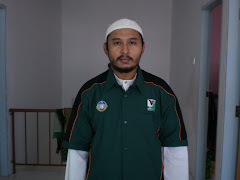
Kuatan Pahe Darul Makmur
pemakaian serban semsa menunaikan solat_InsyaAllah ada sawaaban anugerah Allah
Rempuh halangan
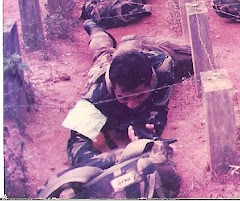
Abah_menyokong kuat oengajian Ijazah UPM

usia 39 tahun

usia 23 tahun_UPM
An_Namiru

Ijazah Pengurusan Hutan UPM
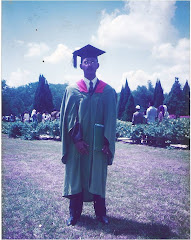
General Lumber_Nik Mahmud Nik Hasan

Chengal

Tauliah

Semasa tugas dgn general lumber

PALAPES UPM

UPM

Rumah yang lawa

Muhammad_Abdullah CD
semasa bermukim di Kuatan Pahe Darul Makmur
Ijazah

air terjun

Borneo land

GREEN PEACE
GREEN PEACE
Kelang

Ahlul Bayti_ Sayid Alawi Al Maliki

Asadu_ Tenang serta Berani

atTiflatul Falasthiniin

Sayid Muhammad Ahlul Bayt keturunan Rasulullah

AnNamiru_SAFARI_Kembara

AnNamiru_resting

Hamas

sabaha anNamiru fil nahri

Namir sedang membersih

Tok Guru Mualimul_Mursyid

An_Namiru
.jpg)
Namir_istirehat
.jpg)
SaaRa AnNamiru fil_Midan
.jpg)
Renungan Sang Harimau_Sabaha AnNamiru
.jpg)
Syaraba AnNamiru Ma_A
.jpg)
AnNamiru_Riadhah
.jpg)
AnNamiru_Riadhah
.jpg)
AnNimru ma_A waladuha
Namir fil_Ghabi (sebut Robi...
Namir

AdDubbu_Beruang di hutan

Amu Syahidan Wa La Tuba lil_A'duwwi

AsSyahid

Namir

Tangkas
najwa dan irah

sungai

najwa

najwa

Kaabatul musyarrafah

unta

Jabal Rahmah

masjid nabawi

masjid quba

dr.eg

najwa dan hadhirah

along[macho]
![along[macho]](https://blogger.googleusercontent.com/img/b/R29vZ2xl/AVvXsEjuMi7D33CmR0_KXrCW2XigfLcUuQurcvtqOS139ncCwEzCyB-jUopk7QK7anADIenJEm2S0N6gAY1ubnACYXewgiAsI3rBjnLTawM39alLL-rEopOoVqn0w5WpLhPJH3hrXNtchEhgtyaI/s240/P7150023.JPG)
harissa dan hadhirah

adik beradik
Tongkat Ali

Tongkat Ali
herba kacip Fatimah
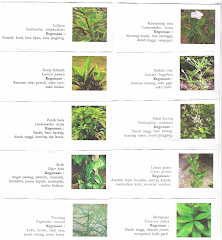
herba Kacip Fatimah
hempedu beruang
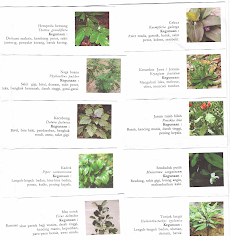
hempedu beruang
hempedu bumi

hempedu bumi
herba misai kucing

herba misai kucing
herba tongkat Ali
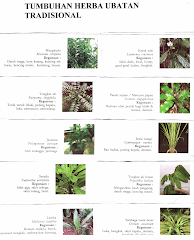.png)
Tongkat Ali
Ulama'

Ulama'
kapal terbang milik kerajaan negara ini yang dipakai pemimpin negara

kapal terbang
Adakah Insan ini Syahid

Syahid
Tok Ayah Haji Ismail

Saifuddin bersama Zakaria

Dinner....
Sukacita Kedatangan Tetamu
Pengikut
Kalimah Yang Baik

Ubi Jaga

Ubi Jaga
Arkib Blog
Burung Lang Rajawali

Chinese Sparrowhawk
Kelicap Mayang Kelapa

Brown-Throated Sunbird
Kopiah

Pokok Damar Minyak

Kacip Fatimah
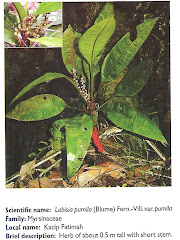
Mengkudu Akar




